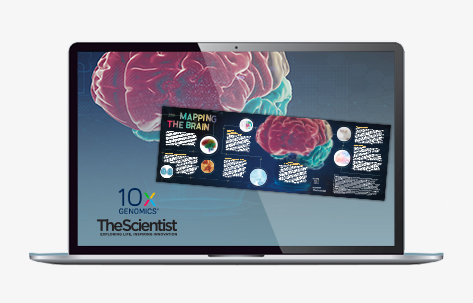
POSTER
Mapping the Brain in 3-D
3-D brain atlases help scientists better understand brain function in physiological and pathological situations.


The human brain is anatomically diverse, with regional variations in terms of composition, structure, and function. For scientists to understand how features influence function, they must characterize brain anatomy at regional and cellular-level resolutions. Visualizing the brain in three dimensions is challenging, but recent advances in genomics, proteomics, microscopy, and imaging have enabled the creation of interactive, multi-modal 3-D brain atlases, such as the Allen Mouse Brain.
Download this poster from The Scientist’s Creative Services Team to explore how scientists create and use brain atlases to better understand how the brain works in sickness and in health.